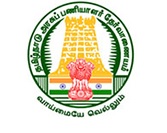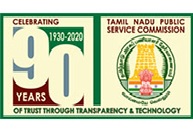TNPSC Computer Science Exam Syllabus
Organisation : Tamil Nadu Public Service Commission (TNPSC)
Exam Name : TNPSC Computer Science Examination
Standard : UG Degree Standard
Subject Code : 286
Announcement : TNPSC Computer Science Exam Syllabus
Website : https://www.tnpsc.gov.in/English/new_syllabus.html
TNPSC Computer Science Exam Syllabus
TNPSC Computer Science Exam Syllabus are given below,
Related / Similar Syllabus : SSC Scientific Assistant Syllabus 2022

UNIT – I: Mathematical Foundations
Prepositional logic sets, relations, functions, partial orders and lattices, regular and context free languages, finite state machines and pushdown automata.
UNIT – II: Computer Organization
Function organization, machine instructions, addressing modes, introduction to microprocessors, study of 8085/8086 communication between processor and I/O via DMA and interrupt priority, I/O processors, problems associated with bus scheduling. Micro computer memory, virtual memory, basic concepts, problems of virtual memory, page replacements algorithms, cache memory, associative memory. Fundamentals of parallel processing and its necessity pipelined processors and multiprocessors.
UNIT – III: Data Structures In C
Data types, control statements, procedures, Scope rules, arrays and records, enumerated data types, sets, pointers, recursion. Sequential, indexed files, sorting and merging report generations. Arrays, queues, linked lists, stacks, tree traversal, evaluation of expressions using postfix notation, sorting algorithms, bubble sort, quick sort, heap sort, complexity of algorithms.
UNIT – IV: Systems Software
Editors, loaders, linkers, assemblers, phases of a compiler and their function, lexical analysers and parsers, parsing techniques, symbol table, code generation. Batch, Multi-programming and time sharing systems, processor memory, device and file management, virtual memory, process scheduling, inter process communication, I/O redirection, process synchronization and concurrency, deadlocks, prevention, avoidance, detection and recovery, auxiliary storage management, file system functions and its hierarchy.
UNIT – V: Database Systems
File organisation techniques: indexing, relational and network data models, study of ORACLE as a relational DBMS. Data dictionary, normal forms and query languages.
UNIT – VI: Computer Networks
Data communication concepts, concepts of LAN, evolution of LAN, OSI – 7 layer reference model and design issues. Physical layer-transmission media, packet and circuit switching, topologies, Data link layer, token passing, sliding window protocols, protocols specification and verification, network layer, routing, congestion control, transport layer, session and presentation layers, design issues, application layer, file transfer, electronic mail.

UNIT – VII: Software Engineering
Systems analysis, detailed analysis, feasibility study, tools for system designer, input and output design, program definition, module design and design review, structured programming and conversion, testing, training and documentation, systems life cycle, role of System Analyst. Tools for office Automation, word processing Spreadsheets, Financial and Statistical packages, payroll, inventory, picture generation and display in computers, Multimedia systems, Application of computers in Government, Defence, Agriculture, Medicine and Education.
UNIT – VIII: Computer Graphics
Introduction – Point plotting techniques – Line drawing displays – Two dimensional displays – Clipping and Windowing. Graphics package – Segmented display files – Display file compilation – Geometric models – Picture structure. Graphical input units – graphical input techniques – Event handling – Input functions. Raster graphics fundamentals – Solid area scan conversion – Interactive raster graphics – Raster graphics systems – Raster display hardware. Two dimensional and three dimensional transformations.
Download Syllabus
TNPSC Computer Science Exam Syllabus Link:
http://www.syllabus.gen.in/uploads/pdf2022/3001-syllabus.pdf